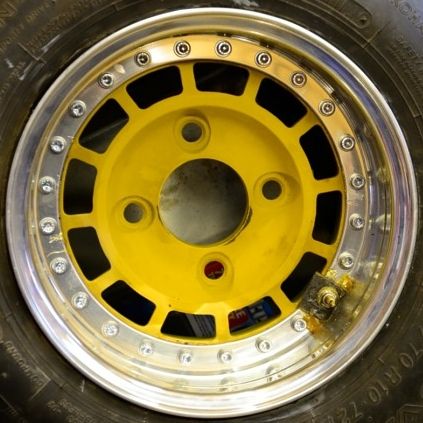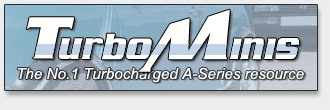| Page: |
| Home > Technical Chat > Reading Turbine Maps | |||||||
|
493 Posts Member #: 3894 Senior Member sallys gap. garden of Ireland |
25th Mar, 2009 at 01:17:53am
I see what you mean jb.
|
||||||
|
493 Posts Member #: 3894 Senior Member sallys gap. garden of Ireland |
25th Mar, 2009 at 02:35:10am
Does this mean both?
On 11th Oct, 2007 Paul S said:
Q2. Is the pressure ratio across the turbine or the compressor. . Pressure Ratio (Pi c ) is defined as the Absolute outlet pressure divided by the Absolute inlet pressure. Pi c = P 2c/P1c if pi c = Pressure Ratio P2c = Compressor Discharge Pressure P1c = Compressor Inlet Pressure Just expanding my mind, dont mind me, sorry |
||||||
|
8604 Posts Member #: 573 Formerly Axel Podland |
25th Mar, 2009 at 09:03:24am
On 24th Mar, 2009 t2clubby said:
But surely running rich would increase the initial flow figure due to the fuel content? Maybe enough to ofset the cooling effect? A rich mix could increase that 10.1 by almost another 1lb/min surely...? Yes, the mass flow would be slightly higher, but the temperature would be much lower giving less energy to drive the turbine. Saul Bellow - "A great deal of intelligence can be invested in ignorance when the need for illusion is deep."
|
||||||
|
8604 Posts Member #: 573 Formerly Axel Podland |
25th Mar, 2009 at 09:17:44am
On 24th Mar, 2009 jbelanger said:
First let me say I know nothing about turbine maps. But if I look at the curve shown and using Paul's numbers, does that mean that the turbine becomes a significant restriction at 4000RPM and that either the wastegate has to start opening or the backpressure will increase? Does it also mean that the wastegate should be opened above 4000RPM if backpressure increases regardless of the intake pressure because the turbine won't flow more anyways? If so, then would it make sense to control the wastegate from both the intake and exhaust pressure? I'm sorry if I'm completely off track but I'm just trying to make sense of this. Jean Let's assume for now that boost equals back pressure. The wastegate will start to open at 15 psi if the actuator was set to control boost at 15 psi. It will then maintain 15 psi boost as the revs increase by opening the wastegate further. It is effectively a closed loop control system. It is usual for exhaust pressure to be slighly higher than intake pressure but not by a lot. Some people suffer from boost creep, this happens when the wastegate gets to fully open before the engine has reached its limit. The boost then goes up as the turbine speeds up due to the higher pressure in the exhaust manifold. Then you need to fit an external wastegate. The thing to remember with the turbine curve from ^^^^^ is that it is a gross simplification of a turbine performance. If they drew it properly, stretched the vertical axis, tightened the horizontal axis and added iso-efficiency lines then it would look similar to a compressor curve. Although they show the "corrected" flow flattening out at higher pressure ratios. The actual flow that the turbine needs to generate the power to drive the compressor at a given speed could be less at higher pressure ratios as the turbine gets its power from the pressure rather than the flow. Saul Bellow - "A great deal of intelligence can be invested in ignorance when the need for illusion is deep."
|
||||||
|
8604 Posts Member #: 573 Formerly Axel Podland |
25th Mar, 2009 at 10:39:29am
Sorted:
Saul Bellow - "A great deal of intelligence can be invested in ignorance when the need for illusion is deep."
|
||||||
 2406 Posts Member #: 341 aka T2clubby South Staffs |
25th Mar, 2009 at 10:51:00am
Excellent! |
||||||
|
8604 Posts Member #: 573 Formerly Axel Podland |
25th Mar, 2009 at 10:56:06am
On 25th Mar, 2009 t2clubby said:
Excellent! Thanks for the prompt. I've been meaning to sort this out. Saul Bellow - "A great deal of intelligence can be invested in ignorance when the need for illusion is deep."
|
||||||
| Home > Technical Chat > Reading Turbine Maps | |||||||
|
|||||||
| Page: |

